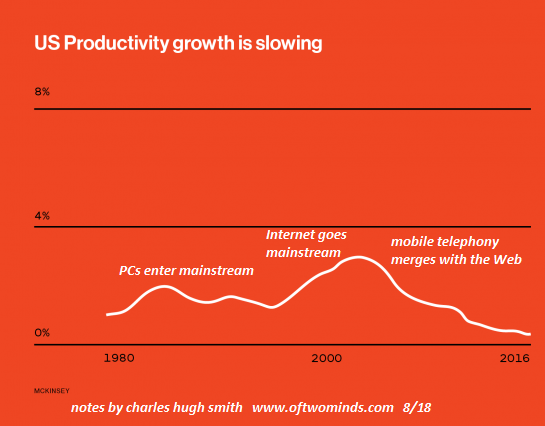Productivity in the US has been a hot topic among economists over the past few years, as the Fed and other academics have puzzled over how the longstanding correlations between unemployment & inflation have unraveled in the years since the financial crisis.
Americans are working longer hours than ever before. Yet, wage growth remains stagnant, and automation is killing more jobs than ever before.
Still, the US has perennially ranked as one of the hardest-working countries in the world as American workers clock in more hours than almost any of its peers in both the developed and developing world classifications.
But, in order to drill down and collect more data on the subject, Kempler Industries carried out a study to rank the 200 hardest working cities in the US. In order to compare apples to apples, Kempler ignored cities with populations below 150,000.
A map below shows the top 10 hardest working cities.
Washington DC takes the top spot, scoring 90 points out of 100. But although DC takes the top spot, seven out of the top ten hardest-working cities on the list could be found in the Lone Star state.
One reason why Texas had so many of the hardest working cities: Across Texas, roughly 20% of the state is of retirement-age.
And not only were workers in these cities working longer hours than Americans elsewhere, they were also commuting longer. With the exception of Irving, every Texas city within the top 10 had an average commute that is longer than the national average.
In terms of population, the largest cities on our list are Chicago and New York City while Pembroke Pines, Florida and Grand Prairie, Texas are the smallest cities on our list.
Taking a step back, as the chart below shows, productivity in the US has been declining since the mid-aughts
Theories about the underlying causes of this slowdown in productivity abound: one explanation holds that institutions and corporations are not deploying the new technologies very effectively for a variety of reasons: the cost of integrating legacy systems, insufficient training of their workforce, and finally, ill-planned investments by some companies utilizing these technologies scaring off others from following suit (perhaps more successfully).
To be sure, after years of declines, productivity posted its best quarterly growth during Q4 of 2018, according to BLS.
Remember: Productivity is important because producing more value with every unit of energy, every tool and every hour of labor helps drive higher wages, profits, taxes and general prosperity.
Then again, there’s another explanation that has been catching on recently: Social media is helping to distract workers at unprecedented rates. According to one study, Americans are spending nearly 6 hours a day on their phones, facebooking, snap-chatting, insta-graming and interacting with their friends and others via social media networks.
That time has got to come from somewhere.
via ZeroHedge News https://ift.tt/2K0La9m Tyler Durden
